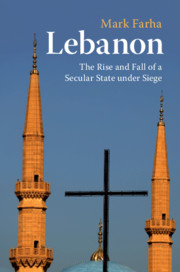Book contents
- Lebanon
- Lebanon
- Copyright page
- Dedication
- Contents
- Figures
- Preface
- Acknowledgments
- Introduction and Conceptual Framework
- 1 Definitions and Genealogies of Secularism
- 2 Prototypes of Secularism in Lebanon
- 3 Way Stations of the Lebanese Republic
- 4 Socioeconomic Globalization and Secularism 1990–2005
- Conclusion
- Bibliography
- Index
- References
Bibliography
Published online by Cambridge University Press: 05 August 2019
- Lebanon
- Lebanon
- Copyright page
- Dedication
- Contents
- Figures
- Preface
- Acknowledgments
- Introduction and Conceptual Framework
- 1 Definitions and Genealogies of Secularism
- 2 Prototypes of Secularism in Lebanon
- 3 Way Stations of the Lebanese Republic
- 4 Socioeconomic Globalization and Secularism 1990–2005
- Conclusion
- Bibliography
- Index
- References
Summary

- Type
- Chapter
- Information
- LebanonThe Rise and Fall of a Secular State under Siege, pp. 284 - 311Publisher: Cambridge University PressPrint publication year: 2019



